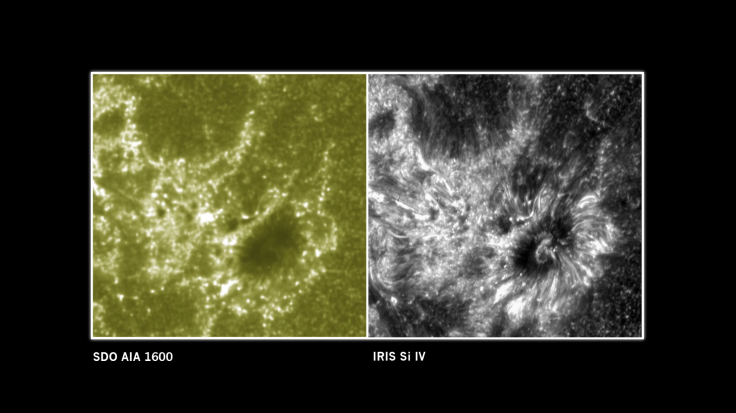NASA’s IRIS Telescope Gets Its First Look At The Rarely Seen Region Of The Sun's Atmosphere [PHOTO]
NASA’s Interface Region Imaging Spectrograph telescope, just launched on July 17, has delivered its first images of the sun’s atmosphere. IRIS was able to capture the interface region of the sun’s lower atmosphere.

IRIS is currently orbiting around Earth, and NASA is using the new telescope to observe how energy gets transferred throughout the sun. The main focus will be the chromosphere, the middle layer of the sun’s atmosphere, and the space agency will use the images taken by IRIS to observe energy transfers from the surface of the sun to the corona, the extended outer layer of the star’s atmosphere.
NASA is excited by the research opportunity IRIS provides based on the first images produced by the telescope. IRIS mission scientist Adrian Daw, at NASA's Goddard Space Flight Center, said in a statement, “These beautiful images from IRIS are going to help us understand how the sun's lower atmosphere might power a host of events around the sun.” Daw says IRIS’ capabilities could lead to some surprising discoveries.
IRIS has just one onboard ultraviolet telescope that allows the spacecraft to take extremely detailed images of the sun. The telescope also can be used to examine specific phenomena observed by NASA’s Solar Dynamics Observatory, which can view more of the sun than IRIS. In the first image captured by IRIS, the space agency was able to observe thin looping structures that indicate extreme contrasts in temperature and density within a few hundred miles of the sun’s surface, notes NASA. The image also includes several locations that dim and brighten at an accelerated rate. NASA believes these regions could provide new clues about the ways energy transfers throughout the sun.
Unlike on Earth, the sun gets hotter the further away from the surface. In the first layer of the sun’s atmosphere, the photosphere, temperature behaves as one might expect and the upper level of this layer is cooler, but temperatures increase from the chromosphere, the second layer, to the solar transition layer, the final layer of the sun’s atmosphere. According to NASA, this region can see temperatures thousands of times hotter than the surface of the sun.
The next step for researchers will be examining the various structures within the IRIS images to determine their role in energy transfer from the surface of the sun to the corona. According to NASA, the thin structures found in the IRIS image could be used to observe the effects of magnetic energy on solar temperatures. The space agency also points out IRIS’ observations of the interface region will benefit Earth and provide new evidence about the effects of space weather on the planet and the satellites currently in orbit.
A video detailing IRIS' first image of the sun's atmosphere, courtesy of NASA, can be viewed below.
© Copyright IBTimes 2024. All rights reserved.






















